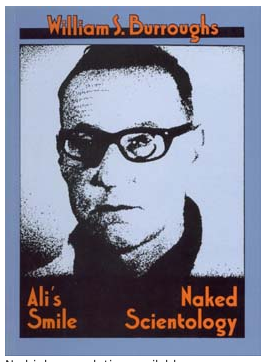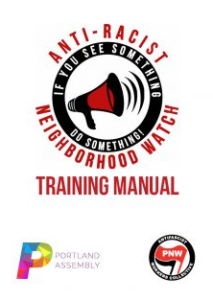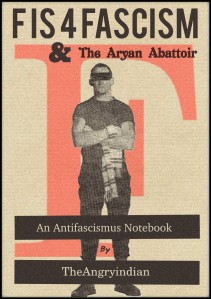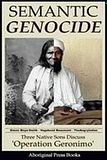—
Operation Clambake and ronthenut.org present: Ron the Nut – The biography of L. Ron Hubbard shows a man who was incapable of telling the truth: a pathological liar who hated and despise humanity; a sociopath caught between the conflicting desires to earn the admiration of humanity, and his desire to inflict great pain and misery upon those who ignored him and refused him his self-perceived due measure of honor and reverie (which was and is 99.999% of his fellow human beings).
As such, Mister Hubbard was constantly trying to purchase glory and recognition when he had the funds to make the attempt, or stole that recognition by lying and deceiving when money wasn’t enough. Mister Hubbard was driven by greed and megalomania. He was a devout racist who wrote in praise of South African Apartheid; he was a crazed misogynist who insisted women were inferior intellectually— later in life his venereal disease (caught from a whore while on leave from the Navy) instilled within him a fear and dread of womankind that expressed itself in insanity and impotency.
The life of Hubbard was that of one long series of pathetic failures, punctuated with a few greed-driven successes once he developed what he called “The religion angle” for the worthless “self-help” sham he fabricated called “Dianetics® / Scientology®.”
Hubbard was a petty thief; a wife beater; and sociopath; a drug-addicted, rum besotted schizophrenic who once begged the United States government for psychiatric help but was ignored, to the detriment of his many victims. One FBI agent wrote of Hubbard, “appears mental,” which is a short and accurate summation of Mr. Hubbard.
—
Operation Clambake www.xenu.net did an excellent
job gathering documents from the United States Federal Bureau of Investigation (FBI)
office, via the Freedom of Information Act (FOIA). The documents show that L. Ron
Hubbard tried to use the FBI to “punish” his enemies by claiming his
emenies were Communists. There is a remote chance that Hubbard actually believed
his own claims, though it is much more probable that Hubbard mearly called his
enemies “Communists” because he wished to ruin their lives and their
reputations— a technique that would later become Scientology® policy and
“scripture.” One of his targets was his wife Sara Northrup, whom Hubbard
told the FBI was “suspected only” of being a Communist: he wanted to get
rid of her (see last panel for .GIF image). These files are available
via PKZip file here courtesy of Operation Clambake. Note
that Hubbard put a “Ph.D.” after his name, but he never earned a Ph.D.
and did not possess a Ph.D. Hubbard’s letters, a sample of which are reproduced
below, show why the FBI wrote “appears mental” in his
records.
—
Operation Snow White – Wikipedia – Operation Snow White was a criminal conspiracy by the Church of Scientology during the 1970s to purge unfavorable records about Scientology and its founder, L. Ron Hubbard. This project included a series of infiltrations into and thefts from 136 government agencies, foreign embassies and consulates, as well as private organizations critical of Scientology, carried out by Church members in more than 30 countries.[1] It was one of the largest infiltrations of the United States government in history,[2] with up to 5,000 covert agents.[3] This operation also exposed the Scientology plot ‘Operation Freakout’, because Operation Snow White was the case that initiated the US government investigation of the Church.[3]
Under this program, Scientology operatives committed infiltration, wiretapping, and theft of documents in government offices, most notably those of the U.S. Internal Revenue Service. Eleven highly placed Church executives, including Mary Sue Hubbard (wife of founder L. Ron Hubbard and second-in-command of the organization), pleaded guilty and were convicted in federal court of obstructing justice, burglary of government offices, and theft of documents and government property. The case was United States v. Mary Sue Hubbard et al., 493 F.Supp. 209 (D.D.C. 1979).[4][5][6][7]
—
List of Guardian’s Office operations – Wikipedia – From its establishment in 1966 to its demise in the early 1980s, the Guardian’s Office (GO) of the Church of Scientology carried out numerous covert operations and programs against a range of perceived opponents of Scientology in the United States and around the world. The GO sought to discredit, destroy or otherwise neutralize – or “depower”, in Scientology jargon – any group or individual that it regarded as anti-Scientology. Instructions for such operations were distributed in the form of individually numbered “Guardian Program Orders”, abbreviated as GPgmOs, which were distributed from the GO leadership to GO branches in Churches of Scientology and ultimately used to task agents.
—
On July 8, the FBI raided Church of Scientology locations in Los Angeles, Hollywood and Washington, DC.[16] The Los Angeles raid involved 156 FBI agents, the most that had ever been used in a single raid. It lasted 21 hours and filled a 16-ton truck with documents and other items.[8]
The raids not only turned up documentation of the group’s illegal activities against the United States government,[43] but also illegal activities carried out against other perceived enemies of Scientology. These included “Operation Freakout“, a conspiracy to frame author Paulette Cooper on false bomb-threat charges, and conspiracies to frame Gabe Cazares, mayor of Clearwater, Florida, on false hit-and-run charges.[44][45] The papers also revealed that Sir John Foster (author of the official UK Government inquiry into Scientology) and Lord Balniel (who had requested the report) were targets, along with the National Association for Mental Health (NAMH) and World Federation for Mental Health.[46]
Comparing the FBI to the Gestapo, the Church declared that all the files seized from the Church were taken illegally,[47] though the FBI produced a 40-plus page affidavit detailing 160 specific items they were looking for.[48]
By July 20, 13 days after the raid, a Washington judge ruled that the documents should be returned, at least temporarily, to the Church, and that none of the documents could be shared with branches of the government, unless that specific branch was investigating Scientology. Scientology’s lawyers had successfully argued that in order to prepare for an August 8 hearing on the legality of the raid, they must be able to see the documents.[49] By July 27, a judge in Washington had ruled the warrant authorizing the raid was too broad and, as such, violated the Church’s 4th Amendment rights.[50] In August, this ruling would be overturned, with Scientology promising to take the case to the Supreme Court,[51] which would, early in the next year, refuse to hear the case.[52]
In August 1978, 11 high-ranking members of Scientology were indicted on 28 charges. One of the indicted was Mary Sue Hubbard, wife of Scientology’s creator L. Ron Hubbard. The other ten were Gerald Wolfe, Cindy Raymond, Henning Heldt, Duke Snider, Gregory Willardson, Richard Weigand, Mitchell Herman, Sharon Thomas, Jane Kember, and Mo Budlong. Kendrick Moxon and L. Ron Hubbard were named unindicted co-conspirators.[53]
Over the course of the investigation, the Church of Scientology attempted to have a judge removed,[53] and subpoenaed almost 150 federal agents in what appeared to be a large stalling scheme.[54] The Church also offered several shifting explanations for their actions.[55][56] Ultimately, these tactics failed and the defendants agreed to a plea deal.
Seven of the 11 members of the Guardian’s Office pleaded guilty to just a single count of conspiracy to obstruct justice. One more pleaded guilty to a similar charge and a ninth pleaded guilty to a misdemeanor. The Scientologists were allowed to argue for the suppression of the government’s evidence. The remaining two Scientologists were in England, pending extradition.[57]
—
L. Ron Hubbard’s 5 Most Impressive Lies (Besides Scientology) – And his own son, L. Ron, Jr. said:
“I have personal knowledge that my father regularly used illegal drugs including amphetamines, barbiturates and hallucinogens. He regularly used cocaine, peyote and mescaline.”
But despite all that, it appears his favorite drugs were actually the psychiatric kind. He loved those so much that when he died in 1986, it was discovered that he had been habitually injecting himself with Vistaril, a drug used for “acutely disturbed” patients and for those suffering from alcohol withdrawal, among other things.
Yes, it appears that L. Ron had a stash that could make the average ’80s metal band hold a tearful intervention.
—
Scientology and the occult – Wikipedia – Scientology founder L. Ron Hubbard claimed to have had a near-death experience in 1938 that inspired him to write Excalibur, an unpublished manuscript based on the revelations from the experience. In 1945-46, Hubbard was briefly involved with Jack Parsons, an American Thelemite and member of the Agape Lodge of Aleister Crowley’s magical order, Ordo Templi Orientis, in Pasadena, California.[1] In 1950, he published Dianetics: The Modern Science of Mental Health, and in 1953 he organized the Church of Scientology.
The occult (from the Latin word occultus “clandestine, hidden, secret”) is “knowledge of the hidden”.[2] In common English usage, occult refers to “knowledge of the paranormal”.[3] It also describes a number of magical organizations or orders.
Hugh B. Urban, a scholar on religion who has written much about Scientology, writes that while some writers, such as Jon Atack, assert that Crowley’s ideas on magic are at the core of Scientology, others, including Roy Wallis and J. Gordon Melton, have dismissed the connection between occultism and the Church. He argues further that the occult elements are combined with concepts in Eastern religions, science fiction, pop psychology and Hubbard’s own thoughts, while confirming that there is one element that is related to the occult in the religion.[4]
—
HBO Has 160 Lawyers Preparing For Its New Scientology Documentary – Business Insider – “We have probably 160 lawyers” looking at the film, HBO Documentary Films president Sheila Nevins tells The Hollywood Reporter.
The documentary is based on Pulitzer Prize-winning author Lawrence Wright’s controversial book “Going Clear: Scientology, Hollywood, & the Prison of Belief,” which grew out of a New Yorker profile on former Scientologist director Paul Haggis.
—
—
‘Going Clear’: How Alex Gibney filmed Scientology Doc – Business Insider – Gibney’s approach to secrecy came from his talks with Wright, who used similar methods when he interviewed former church members for his book. “I often used throw-away phones and encrypted e-mail,” he said. “People were so frightened.”
Gibney would discover that fear also spread to the media. Licensing footage of anything related to Scientology for his film through the major news outlets turned out to be impossible. “They all declined to license it to us for legal reasons,” he said, which forced him and his team to declare fair-use, permitting limited use of copyrighted material without acquiring permission.
But the biggest battle is the one Gibney and HBO are currently facing.
Since the film premiered at the Sundance Film Festival in January, Scientology has gone on the attack to discredit Gibney and the film. The church bought out a full-page ad in The New York Times before it screened at Sundance, comparing Gibney and his work to the now infamous Rolling Stone story about rape at the University of Virginia.
In February, the Church released a video on the YouTube page of its publication Freedom denouncing the film’s claims about the horrible living arrangements for its Sea Organization members — the clergy of Scientology who sign billion-year contracts to serve the church — instead showing lush locations they inhabit and the beautiful facilities the church offers members.
—
Fair Game (Scientology) – Wikipedia – Scientology’s founder, L. Ron Hubbard, said all opposition came from what he called “Suppressive Persons” (SPs)— which scientologists claim are “anti-social people who want to destroy anything that benefits humanity.”[3] In written policies dating from the mid-1950s, Hubbard told his followers to take a hard line against perceived opponents. In 1955 he wrote, “The purpose of the suit is to harass and discourage rather than to win. The law can be used easily to harass, and enough harassment on somebody who is simply on the thin edge anyway, well knowing that he is not authorized, will generally be sufficient to cause his professional decease. If possible, of course, ruin him utterly”.[7]
In his confidential Manual of Justice of 1959, Hubbard wrote “People attack Scientology. I never forget it, always even the score.”[1] He advocated using private investigators to investigate critics, who had turned out to be “members of the Communist Party or criminals, usually both. The smell of police or private detectives caused them to fly, to close down, to confess. Hire them and damn the cost when you need to.”[8] He said that in dealing with opponents, his followers should “always find or manufacture enough threat against them to cause them to sue for peace. Don’t ever defend. Always attack.”[9] He urged the use of “black propaganda” to “destroy reputation or public belief in persons, companies or nations.”[9]
The Church has retained an aggressive policy towards those it perceives as its enemies,[10][11] and argued as late as 1985 that retributive action against “enemies of Scientology” should be considered a Constitutionally-protected “core practice” of Scientology.[12]
—
 Ali’s Smile: Naked Scientology – Wikipedia – Ali’s Smile: Naked Scientology is a collection of essays and a short story by American Beat writer William S. Burroughs (1914–97). First published in 1971 as the short story “Ali’s Smile”, the book eventually contained a group of previously published newspaper articles as well, all of which address Scientology. Burroughs had been interested in Scientology throughout the 1960s, believing that its methods might help combat a controlling society. He joined the Church of Scientology later in the decade. However, he became disenchanted with the authoritarian nature of the organization. In 1970 Burroughs had published a “considered statement” on Scientology’s methods because he felt they were significant enough to warrant commentary. These pieces were later gathered together into Ali’s Smile: Naked Scientology, which religious studies scholar Hugh B. Urban describes as a “nonscholarly popular exposé of Scientology”.[1][2] Burroughs’s texts argue that while some of Scientology’s therapies are worthwhile, the dogmatic nature of the group and its secrecy are harmful.
Ali’s Smile: Naked Scientology – Wikipedia – Ali’s Smile: Naked Scientology is a collection of essays and a short story by American Beat writer William S. Burroughs (1914–97). First published in 1971 as the short story “Ali’s Smile”, the book eventually contained a group of previously published newspaper articles as well, all of which address Scientology. Burroughs had been interested in Scientology throughout the 1960s, believing that its methods might help combat a controlling society. He joined the Church of Scientology later in the decade. However, he became disenchanted with the authoritarian nature of the organization. In 1970 Burroughs had published a “considered statement” on Scientology’s methods because he felt they were significant enough to warrant commentary. These pieces were later gathered together into Ali’s Smile: Naked Scientology, which religious studies scholar Hugh B. Urban describes as a “nonscholarly popular exposé of Scientology”.[1][2] Burroughs’s texts argue that while some of Scientology’s therapies are worthwhile, the dogmatic nature of the group and its secrecy are harmful.






















Recent Comments